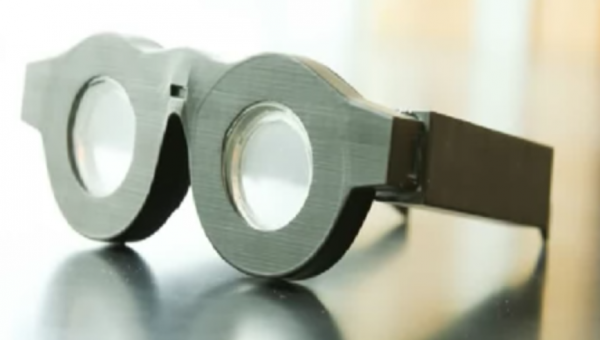By Vishal Goel, | January 31, 2017

Smart Glasses
A professor of electrical and computer engineering at the University of Utah has developed a pair of smart glasses with liquid lenses that automatically focus on whatever the wearer is looking at.
The Inspiration
Carlos Mastrangelo, after hitting his early 50s, started suffering from a vision problem called "presbyopia". He couldn't focus up close anymore and needed to wear glasses whenever he wanted to read a book, just like many other people. "I kept asking myself why I am being treated with technology developed by Benjamin Franklin," Mastrangelo wrote in an email to The Verge.
Like Us on Facebook
"I don't live in the 18th century." The most annoying thing, he said, was that he had to take the glasses on and off almost constantly throughout the day. For instance, while driving, he had to take them off while looking at the road and wear them back to look at the GPS screen or the dash panel. So, Mastrangelo decided to solve the problem for himself and ended up creating the pair of smart glasses.
What do the glasses exactly do?
These glasses, displayed at CES last month, are made of liquid lenses and automatically focus on whatever the wearer is looking at - far away or up close. A distance sensor in the bridge of the glasses uses infrared light to calculate the distance between the glasses and the object. The sensor then tells the "actuators" to reshape how the liquid lenses are curved. The curvature of the lens controls the focal length.
This is actually a natural phenomenon in the eyes as well. Normally when one is young, the lenses of one's eyes are flexible, so they change their curvature easily, allowing one to focus on objects far away and up close. But as one gets old, the eye lens becomes more rigid and that's why it becomes hard to read a book, for example.
It takes about 14 milliseconds for the glasses to change focus. Also, the rechargeable battery in the frames lasts more than 24 hours, Mastrangelo says.
How about the future of the glasses?
Mastrangelo, talking about the research published in the journal Optic Express, said that the response was phenomenal at CES. The current design is bulky, said Mastrangelo but he and doctoral student Nazmul Hasan are already working "on much lighter, slimmer, stylish and more capable versions of this set."
The second-generation smart glasses will include eye tracking and a depth camera, so that the lenses become more accurate in figuring out what the wearer is looking at. To power all those added features using more energy, they must also create a more powerful battery which is also small enough to fit in a stylish pair of glasses people will actually want to wear, said Mastrangelo.
The smart glasses are expected to become available in two or three years, and will cost around $500 to $1,000.
-
Use of Coronavirus Pandemic Drones Raises Privacy Concerns: Drones Spread Fear, Local Officials Say

-
Coronavirus Hampers The Delivery Of Lockheed Martin F-35 Stealth Fighters For 2020

-
Instagram Speeds Up Plans to Add Account Memorialization Feature Due to COVID-19 Deaths

-
NASA: Perseverance Plans to Bring 'Mars Rock' to Earth in 2031

-
600 Dead And 3,000 In The Hospital as Iranians Believed Drinking High-Concentrations of Alcohol Can Cure The Coronavirus

-
600 Dead And 3,000 In The Hospital as Iranians Believed Drinking High-Concentrations of Alcohol Can Cure The Coronavirus

-
COVID-19: Doctors, Nurses Use Virtual Reality to Learn New Skills in Treating Coronavirus Patients











